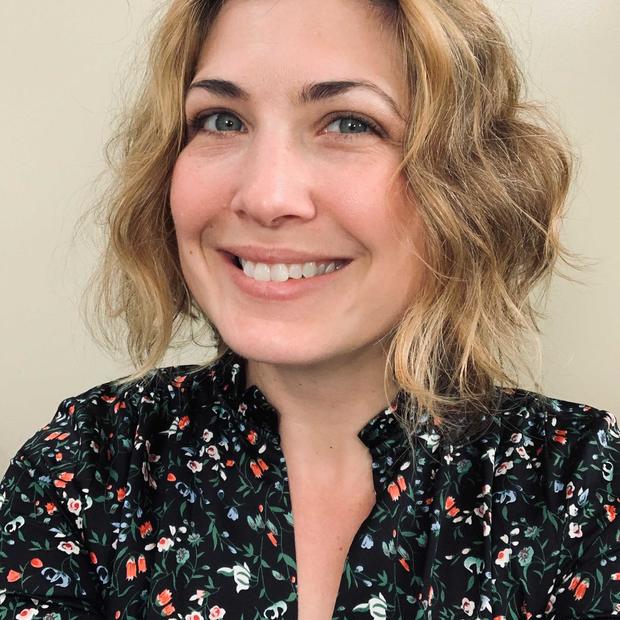Her focus is on functional ceramic pieces with intentionality at the forefront of her creations. From mugs to bowls and vases to ring holders, Beth’s collections are about how people move through their day. As she creates new designs, she imagines the rituals and routines where her work might be of use.
This video is part of our “Made There” series about local artisans. View more videos from Seasons 1 and 2.
The path to this moment was anything but straightforward. Like many people, Beth’s first foray into clay and pottery was during high school art class. She said she fell hard for the medium immediately.
“It was like a gravitational pull,” she said. “It felt like I wasn't being true to who I was when I didn't have my hands in clay.”
But taking up pottery as a hobby comes with a high price tag. Memberships to self-serve studios can be expensive, as can building a home studio complete with equipment and materials. All of these considerations led Beth to set aside her love for pottery when she left for college.
It was a full 10 years before Beth was able to dive back into her artistic passion. During her break from ceramics, she pursued a career as a respiratory therapist, which meant long days of treating patients, some of whom faced insurmountable issues. Her heart and mind desperate for an escape, Beth and her husband slowly collected tools and equipment for a home pottery studio.
The hefty lump of wet clay is now a full-fledged vessel. As her pottery wheel spins, Beth shapes the cylinder’s interior walls with one hand while the other smooths the exterior with a flat-edged tool. Her eyes dart up and down the piece, assessing its width and structure as her rock-steady hands fine-tune the shape. The wheel slows, its somnolent vibration breaking into a clunking heave like an old merry-go-round straining through the weight of its final rotations.
Reuniting with her art was a salve for the stressors of the life-and-death situations Beth faced at work. But the COVID-19 pandemic changed that. Beyond the real dangers of working in a hospital, Beth also faced challenges at home, including finding day care for her child and navigating a new pregnancy. She had to make a choice.
Beth’s voice tightens when she talks about stepping away from medicine that year. Although plagued by the guilt of leaving during a time of need, she knows it was the right thing to do.
“I could not do it anymore,” she said. “My body was falling apart.”
Beth sighs sharply, as though relieved. She hoists the bat, the wheel’s work surface, from the machine, her new creation firmly affixed to its center, and walks it to the shelves against the wall of her shop, where it will dry for several days. She examines a few of the other pieces on the shelf and chooses to work on a handled mug. She sets the newly selected bat on a work table and grabs a wire tool with handles on either side. She sets the wire in place and humbly suggests it might not work out, a self-deprecating act of protection.
“You have to be very careful about each step or your entire piece is ruined,” she explains. “You can't get attached because there's so many points in this process where everything can go wrong.”
Beth double-checks the placement of the wire and makes quick work of separating the mug from the bat. She trims the piece, adding a dandelion-like design. The calm concentration returns to her face. When she is through, she flips the piece upside down and adds her maker’s mark, before returning it to the shelf for another round of drying. She will eventually fire the pieces and then sand, clean and glaze them before placing them in the kiln. It’s a six-week process to create the pieces in her collection, and that’s before photographing them, adding them to her online shop, marketing and shipping.
For Beth, pottery began as a passion, which morphed into a type of therapy, and then a small business. She hopes to inspire people to move away from throw-away culture and toward curating belongings that will be cared for and passed down. She seeks out sustainable practices in her sourcing and shipping, and true to her caregiving nature, she consistently donates at least 10% of her proceeds to nonprofit organizations dedicated to helping people in need. The latest round of donations was sent in support of housing for Ukrainian refugees.
Beth has come a long way since discovering her love of pottery. As her collections grow and evolve, she wants to maintain the intention and purpose behind each piece without losing sight of the joy they should bring. One of her favorite ways to use and enjoy her handmade mugs is by making a fresh cup of tea.
Making chamomile tea
Chamomile tea can be made with fresh or dried flowers. Use about 2 tablespoons of dried chamomile (or 4 tablespoons of fresh chamomile) for every 12 ounces of water. If you grow your own chamomile like Beth, harvest the whole flower head, including the petals and yellow center, and leave the stem and leaves behind. To dry chamomile, you can hang them in a bouquet, use a net bag or lay the flower heads out on a baking tray.
Step 1: Boil water. Beth prefers filtered water for optimal flavor.
Step 2: Add the flowers into a tea infuser, such as the strainer from inside a teapot, a fillable tea bag or metal clamp teaspoon; and place the infuser into your favorite mug.
Step 3: Pour the hot water over the flowers and steep for 5 to 7 minutes.
Step 4: Enjoy your fresh tea.
Chamomile tea pairs well with honey or peppermint and is great for relaxation, soothing anxiety and settling an upset stomach.


